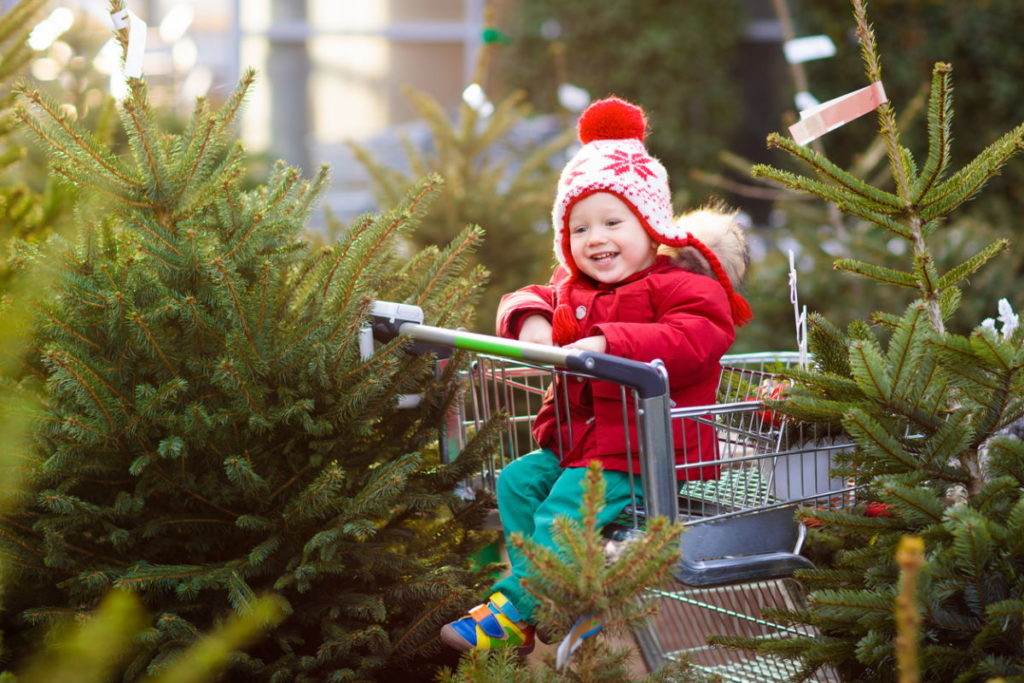Jesko Perrey from McKinsey describes six key trends that are shaping this year’s holiday season.
To say that this holiday shopping season will be a time of profound change would be an understatement. The COVID-19 pandemic is upending the retail industry to an extent that would have been unimaginable one year ago.
Confronted with the first shutdown, people migrated to their laptops and mobile devices and conducted much of their lives from their living rooms. They gravitated toward new streaming services, and over 60 percent tried new ways of shopping, from mobile app ordering to click-and collect. On top of that, almost two-thirds of consumers abandoned their tried-and-true brands or retailers for something new, delivering a shock to loyalty.
This unprecedented scope of change and worsening economic climate due to COVID-19 lockdowns is creating uncertainties for many retailers heading into the holiday shopping season. To help understand what all this means for retailers, we surveyed over 3,500 holiday shoppers in the United States, the United Kingdom, China, Germany, and France.
The findings of our research revealed six key trends that are shaping this year’s holiday season:
1. Blockbuster days dominate
What the data reveals is that many consumers are weary of the persistent uncertainty and anxiety. They long for the normalcy and familiarity that big holiday shopping events provide (as well as the desire for savings), and more than three-quarters of consumers said they intend to participate in them. And, they don’t plan to cut back. 82 percent said they would spend the same or more as last year on big holiday deal events. This is despite 44 percent of holiday shoppers reporting a slight or significant income reduction this year.
We also saw new levels of excitement in China, which is the first major economy which appears to be the first major economy to have recovered from the pandemic (between July and September, the Chinese economy surged 4.9 percent). Three out of four Chinese shoppers said they were either excited or eager for the holiday season and 61 percent said they intend to spend more than last year on events like Singles Day, which takes place on November 11 and sees Chinese e-commerce companies from Alibaba to JD.com push heavy discounts over a 24-hour window. This was reflected in the shopping extravaganza which netted more than $75 billion for China’s Alibaba, an increase of a staggering $38 billion on the previous year.
2. Black Friday: Growing and expanding
The season’s biggest deal day, traditionally occurring the day after Thanksgiving in the United States, will look quite different this year. To avoid long lines of people flooding into stores, retailers are stretching Black Friday into multiple days throughout November. And, looking to divert consumers to online shopping.
In Europe, Black Friday’s appeal is also blossoming. It is now the most popular deal day in the United Kingdom, France, and Germany. 60 percent of holiday shoppers in these countries plan to participate in Black Friday this year, up from 50 percent last year. In comparison, 47 percent said they would take part in Amazon’s Prime Day. In the United Kingdom, Boxing Day now trails Black Friday.
3. The big loyalty challenge
Never before in recent history has there been such a dramatic disruption to consumer loyalty. Since March, over 60 percent of global consumers have tried a new shopping behaviour in response to economic pressures, store closings, and changing priorities. In particular, 40 percent have shopped at a new retailer and one-third have experimented with a different brand of product, especially less expensive private-label brands. As the holiday season kicks into high gear, many of these consumers remain open to new possibilities. Only 12 percent intend to stick with the same retailers they shopped with last year.
Personalisation and social media engagement could hold the key to winning with new and existing customers this holiday season— 31 percent of shoppers said they would use social media for holiday research and ideas, and 25 percent said personalised campaigns could trigger a gift purchase.
4. A peak in digital and omni-channel
Seeking both safer and more convenient experiences, holiday shoppers were intent on flocking to online sites, mobile apps, and omnichannel options like click-and-collect. Across the five countries we surveyed in September, 37 percent of respondents said they intended to spend more online during the holidays this year than they did last year, with UK, Chinese, and US consumers leading the way and consumers in France and Germany moving to digital a bit more slowly.
Now that the UK, France, and Germany face November shutdowns and restrictions to curb a surge in COVID-19 cases, consumers in these countries will likely return to the digital shopping behaviours akin to the first lockdown. In the United States, digital adoption is expected to translate into a surge in ecommerce holiday sales growth by at least 19 percent. In contrast, only 10 percent of shoppers intended to increase the amount they spend in physical stores.
5. An early shopping season
Burned by out-of-stock items, limited availability for curbside pickup windows, and delivery delays that occurred in the spring, many shoppers have already got a jump start on holiday gifts. Almost half of the respondents in our survey said they intend to begin shopping in October or earlier, with shoppers in the United Kingdom most likely to get a head start and consumers in France least likely.
On the flip side, holiday shopping is likely to wind down earlier than normal this year. In the past, lastminute shoppers could count on ordering something online just two days before Christmas and still receive it by Christmas Eve. This year, that’s not likely to be the case, given that COVID-19- related supply-chain and delivery constraints won’t magically disappear for the holidays. Some retailers may set shipping cut-offs for packages to arrive by Christmas Eve as early as Dec. 15.
6. Health and safety are top of mind
Although the story of holiday shopping in 2020 is unequivocally digital, the desire to stroll through festive aisles and browse shopping malls while listening to holiday music hasn’t completely vanished. Before the recent restrictions, 45 percent of respondents planned to browse in stores, a sharp drop from last year’s 65 percent. Of course, some of these shoppers now won’t be able to or want to venture into stores and savvy retailers, operating under new restrictions, should consider what digital experiences they can offer to replace this festive longing to browse in store.
Once in the store, holiday shoppers in every country except China rate universal mask wearing and the use of protective barriers at checkout as the most important safety feature. For Chinese consumers, the use of health checks before entering a store is considered most valuable. The availability of cleaning and sanitising supplies is also a necessary safety element in all countries. For US and French shoppers, one-way aisles and special hours for older shoppers and other vulnerable groups are valued factors.
Holiday season 2020 in a nutshell
Arriving in the midst of the COVID-19 pandemic, this holiday season will undoubtedly turn out different than most. Safety and basic uncertainty remain dominant features of daily life for many consumers around the world, and this is changing both how shopping is done and what consumers are going to buy. Instead of door-busting crowds, 2020’s holiday shoppers will turn to apps and websites in record numbers and will take advantage of click-and-collect as an option that provides both safety and convenience.
These changes represent an opportunity for retailers to connect with large numbers of consumers who have adopted new habits, are open to new brands, or are looking for new gift ideas. Retailers that have taken the time to understand how their customers have changed and have invested in the infrastructure to offer them convenience, safety, and certainty at holiday surge levels will excel this year.

Jesko Perrey is a Senior Partner at McKinsey & Company
Main image courtesy of iStockPhoto.com




